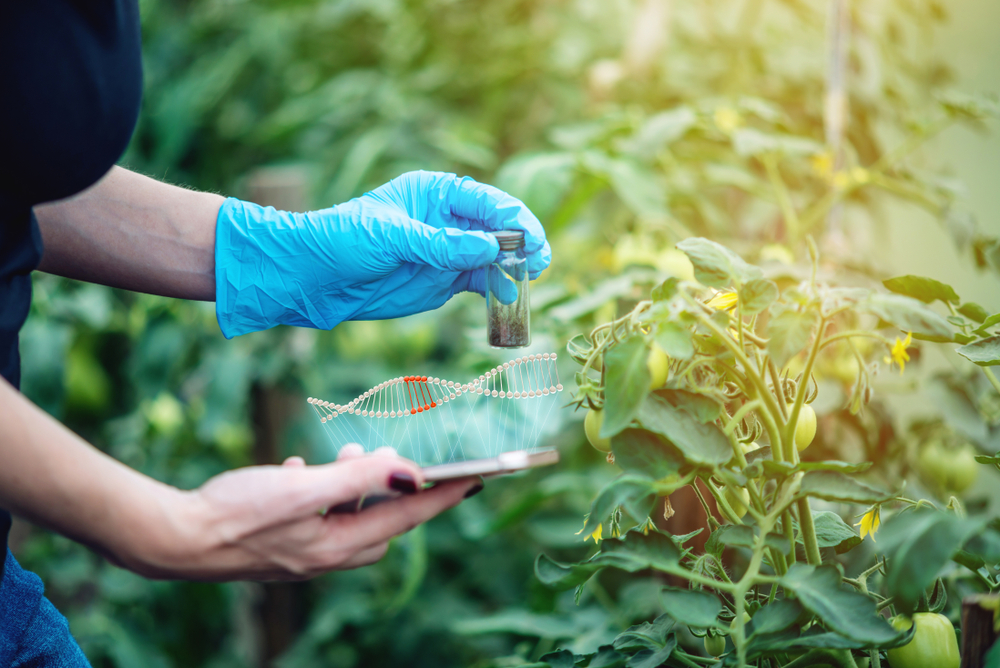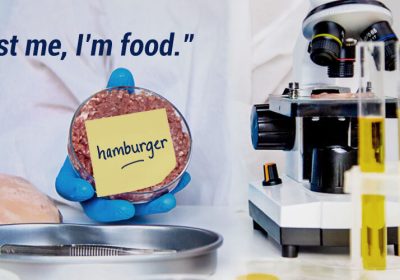The agency has released “guidance” to the biotech industry about how to get foods from gene-edited (GE) plants onto your dinner plate, doubling down on bad policies that treat GE foods the same as any other type of food—even though they are anything but. Action Alert!
THE TOPLINE
- A new FDA guidance doubles down on a decades-old policy that allows largely untested GE foods onto the market.
- In this broken system, a GE tomato is treated much the same as a regular tomato; the process used to create the tomato is irrelevant to the FDA.
- Given the development of GE technology and the influx of synbio products, we need to fight for additional scrutiny on these foods.
Does it matter to you how the food you eat and feed your family is produced? Most of us who care about our health or that of our loved ones, or know something about nutrition and molecular biology, would say “yes.” But, for the FDA, it doesn’t matter what’s happened to your food on its way to your dinner plate. That’s the thrust of the new guidance document released by the agency on foods from GE plants. All that matters to the FDA is the finished product. This means a GE tomato gets to be treated, in regulatory terms, exactly the same way as a regular tomato. No additional safety measures are necessary for GE fruits and vegetables because the process used to create them, says the FDA, is irrelevant. We have to push back against this short-sighted, unscientific, pro-industry stance taken by the federal government. Just think about the influx of synbio foods that are coming to market, thanks to the fact that the FDA has effectively said to industry that it’s ‘game on’ for GE foods, and you don’t need to worry about any additional safety hurdles or labeling.

The guidance spells out the FDA’s logic—or lack thereof—on this issue. In its view, the FDA sees no reason to revise its 1992 new plant variety (NPV) policy that was developed for GMO plants, decades before the arrival of genetic engineering techniques like CRISPR. It argues that plant breeders have tinkered with plant genetics to produce new plant varieties for a long time, and very rarely has a new plant variety been the source of food safety concerns. The agency seems very bullish indeed on gene-editing:
Because genome editing techniques allow for greater control over the site of a genetic modification, new plant varieties produced using genome editing can produce foods with characteristics similar to or even identical to foods from traditionally-bred plants; thus, food from these genome-edited varieties may have the same characteristics as foods from traditionally-bred plants that have been safely consumed in the past.
This is the crux of the issue. And doesn’t it seem to be exactly what GMO protagonists were trying to tell us over two decades ago? The problem is that emerging science is demonstrating how GE—or lab-grown, or GMO-yeast fermented—foods may look and feel like their real counterparts, but they are not, as we saw recently with fake meat and fake milk. The FDA’s stance is extremely dangerous as it entirely ignores the unpredictable effects of genome editing and it opens the floodgates to foods that we have not evolved to eat with unknown nutrition and toxicological profiles. Yet the agency downplays these risks:
Based on available scientific data and information related to the use of genome editing in plants, unintended changes potentially resulting from genome editing are likely to fall within the scope of unintended changes associated with all other plant breeding practices that have historically produced safe food.
The FDA seems to be arguing that gene-editing is no more or less risky than previous plant breeding practices—an argument which defies common sense. Consider, for example, a 2020 article in Nature finding that gene-editing in human embryos caused “chromosomal mayhem,” analyzing three studies that showed large DNA deletions and reshuffling.
The term to keep in mind here is “bioequivalence.” The FDA, as stated above, believes that gene editing and similar techniques can be used to produce foods that, in its limited view, are identical to traditionally-produced foods. This is a pipe dream, particularly in light of recent research into all that we don’t know about even the simplest traditional foods.

Most of us are aware of the basic nutritional building blocks of food—proteins, fats, carbs, vitamins, minerals, phytochemicals, etc. The USDA, for example, has data on hundreds of thousands of foods broken down into 188 different nutritional components. But we’re learning that this only represents a small fraction of the biochemicals present in our food. A group of experts created their own database that is far more comprehensive, including information on 70,000 nutritional compounds—400 times more than the USDA database.
By way of example, the USDA database lists about a dozen compounds in raw garlic, while these researchers list thousands of compounds found in garlic. If we use the USDA as the benchmark, then about 99 percent of the components of food are a mystery to us. And that’s with food we’ve been eating for generations!
And this is the main point. We disrespect the complexity of natural systems when we think that we can tinker with this or that gene, or ferment foods from GMO yeast, or grow cells in a big vat, and achieve what Nature did over eons. If we don’t have a very sophisticated understanding of the food we’re currently eating, we’ll understand far less about foods produced through gene editing and synthetic biology. To call these foods “bioequivalent” and ready for market without a deeper understanding of what they’re made of and what it means for human health to eat them is utter lunacy—and a recipe for disaster.
Action Alert! Write to Congress and the FDA, telling them that we need more testing of gene-edited foods that research is increasingly finding are not bioequivalent to traditional foods. Please send your message immediately.





I have read in articles that gmo seeds can and do produce super weeds, if they are created to be resistant to weeds growing. This would entail more labor to extract these super weeds and involve churning up soils that may disturb the microbiom in the soil. They say they produced them to have to avoid spraying chemicals to kill weeds that are toxic, but, it defeats its purpose and makes it worse. Nature always finds a way. As, in the past when they were advertising antibiotic cleaners for your household and giving antibiotics to farm animals, resistant antibiotic bacteria emerged and filled hospitals. You have to work with nature not fight her, and she will win.
My understanding is the GMO seeds are used not to limit the need for spraying chemicals, but so that when the chemicals are sprayed the weeds die and the GMO plant does not. Example of this being the long used Roundup Ready Soybeans…..I am surrounded by crop fields and when they spray the fields with glyphosate and/or whatever other herbicide they are using, the ground that was covered in perennial grasses and weeds becomes brown with dead grasses and weeds, but the green corn stalks stand high and proud. And chemical drift to gardens belonging to homeowners, churches, schools, and businesses is not just a possibility but a reality.
Hard to believe the FDA is supposed to protect the consumer with actions like this.
This is treason if this gets passed and implemented by this corrupt criminal government establishment. We will not comply with this unconstitutional treaty. The WHO, CDC, FDA, NIH need to be dismantled and abolished. Everyone involved has committed crimes against humanity. We will never stop fighting for our medical freedom, our God given rights and our sovereignty. We demand accountability of these crimes and proper justice served against those involved. We do not consent.